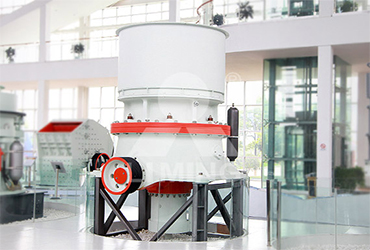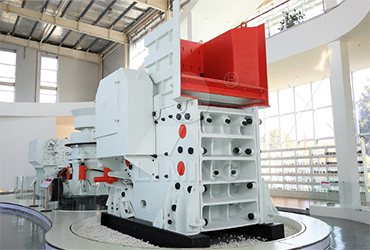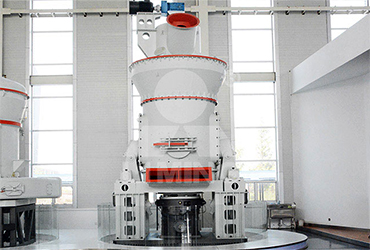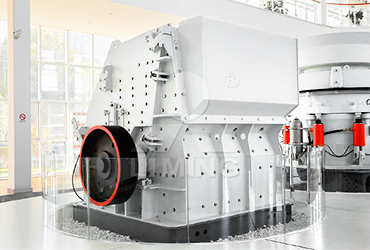
اطلب اقتباس
manufacturing wet process cement
data-id="" iid="">TestbookManufacturing of Cement By Dry and Wet Process - Expert Civil
In this kiln there are 3 different zones shown in fig. below. Cement Manufacturing Process Flow Chart. (i) Drying Zones: In the wet process, the drying zone is comparatively larger
4Manufacture of Cement- Materials and Manufacturing
The manufacture procedures of Portland cement is described below. Mixing of raw material. Burning. Grinding. Storage and packaging. 1. Mixing of raw material. The major raw materials used in the manufacture of cement
标记:Raw MaterialsManufacturing2 Types of Manufacturing of Cement - Wet and Dry
2024/2/7 Cement is manufactured using an earlier, less popular method called wet production. In the wet process, which involves grinding raw materials into a slurry and then feeding them into a rotary kiln for
标记:Wet Process of Cement ManufacturingRaw MaterialsWet Dry CementAll about the Wet Process of Cement Manufacturing
Wet process cement manufacturing method can be used to produce various types of Portland cement, such as ordinary Portland cement, white Portland cement, oil well cement, etc. It can help your cement plant to
标记:Wet Process of Cement ManufacturingConcrete and CementCement ProductionCement Manufacturing and Process Control SpringerLink
2019/8/27 The early manufacturing process of cement was through wet process , in which slurry, made of ground raw material and water, used to feed the rotary kiln. But this
标记:Wet Process of Cement ManufacturingPrasunjit SenguptaPublish Year:2020Modernizing cement manufacturing in China leads to substantial
2022/11/17 Owing to rapid advances in cement manufacturing technology (CMT), China has utilized three major cement kilns in recent decades 6, including shaft kilns,
标记:Xiaozhen XuCement ManufacturingChapter 4 Cement Manufacturing and Process Control
The early manufacturing process of cement was through wet process, in which slurry, made of ground raw material and water, used to feed the rotary kiln. But this ... Fig. 4.1
标记:Wet Process of Cement ManufacturingPrasunjit SenguptaPublish Year:2020Cement Manufacturing—Technology, Practice, and Development
2021/11/17 The primary cement manufacturing process involves the mining of raw materials, mainly limestone and clay, which are used in cement manufacturing. In most
标记:Wet Process of Cement ManufacturingRaw MaterialsConcrete and Cement2 Types of Manufacturing of Cement - Wet and Dry
2024/2/7 The steps involved in the wet process of cement manufacturing are given below: Cement is manufactured using an earlier, less popular method called wet production. In the wet process, which
Wet process for portland cement manufacturing - YouTube
观看视频1:542021/4/6 Cement is a kind of powdery material. When properly mixed with water, it will turn into slurry. The slurry will gradually harden in air and glue together the...
Engineer PassionManufacturing - the cement kiln - Understanding
Wet process kilns. The original rotary cement kilns were called 'wet process' kilns. In their basic form they were relatively simple compared with modern developments. The raw meal was supplied at ambient
How Cement is Made - Cement Manufacturing Process - Dry Process and Wet
2024/2/18 Cement Manufacturing Process. Joseph Aspadin (Great Scientist) first started manufacturing cement in England. First manufacturing name of cement is ordinary Portland cement (OPC) because when cement mixes with water it converts to a solid mass after some period and this solid mass (looks like solid stone) is rooted in the
Cement Manufacturing and Process Control SpringerLink
2019/8/27 The early manufacturing process of cement was through wet process , in which slurry, made of ground raw material and water, used to feed the rotary kiln. But this process requires a high amount of energy, mainly to evaporate the water in the slurry and become uneconomic and largely abandoned.
11.6 Portland Cement Manufacturing - US EPA
1971/8/17 11.6 Portland Cement Manufacturing 11.6.1 Process Description1-7 Portland cement is a fine powder, gray or white in color, that consists of a mixture of ... Wet process and long dry process pyroprocessing systems consist solely of the simple rotary kiln. Usually, a system of chains is provided at the feed end of the kiln in the ...
How Cement is Made - Cement Manufacturing Process
Stage of Cement Manufacture. There are six main stages of the cement manufacturing process. Stage 1: Raw Material Extraction/Quarry The raw cement ingredients needed for cement production are limestone (calcium), sand and clay (silicon, aluminum, iron), shale, fly ash, mill scale, and bauxite. The ore rocks are quarried and crushed into smaller
11.6 Portland Cement Manufacturing - US EPA
1971/8/17 11.6 Portland Cement Manufacturing 11.6.1 Process Description1-7 Portland cement is a fine powder, gray or white in color, that consists of a mixture of ... Wet process and long dry process pyroprocessing systems consist solely of the simple rotary kiln. Usually, a system of chains is provided at the feed end of the kiln in the ...
Cement kiln - Wikipedia
Portland cement clinker was first made (in 1825) in a modified form of the traditional static lime kiln. [2] [3] [4] The basic, egg-cup shaped lime kiln was provided with a conical or beehive shaped extension to increase draught and thus obtain the higher temperature needed to make cement clinker.For nearly half a century, this design, and minor
Production Process CEMEX Philippines
Clinker is the intermediate product used in the manufacturing of cement. There are two primary processes used to manufacture clinker: the dry process and the wet process. Our plants use the dry process, which is more energy efficient. In the wet process, the raw materials are mixed with water to form slurry, which is fed into a kiln.
Cement Manufacturing—Technology, Practice, and
76 4 Cement Manufacturing—Technology, Practice, and Development Fig. 4.2 Modern dry process cement production process 4.2.4 Manufacturing of Cement Clinker The prepared raw material is called the “kiln feed” and is fed to the kiln. In the kiln, this kiln feed is subjected to a thermal treatment process which consists of
What Do You Know About Wet Process Of Cement Production
2024/1/17 Contemporary methods of manufacturing cement can be divided into two ways: dry-process cement production and wet-process cement production. The latter measure has been widely utilized in the cement industry; it is a common manufacturing method in which fuel and power consumption have been reduced to a larger extent.
Inside the Cement Manufacturing Process - Osum
2024/4/4 Unveiling the cement manufacturing process! Explore raw materials, energy efficiency, environmental impact, and future trends in this comprehensive guide. ... resulting in reduced capital costs for new cement plants compared to traditional wet process kilns. Additionally, modern cement plants utilize advanced instrumentation and
Cement Manufacturing—Technology, Practice, and Development
2021/11/17 The primary cement manufacturing process involves the mining of raw materials, mainly limestone and clay, which are used in cement manufacturing. In most of the cases, the limestone and clay are excavated from open cast mines by drilling and blasting and other appropriate processes in mines. ... Wet process kilns are the old
Cement Manufacturing—Technology, Practice, and
76 4 Cement Manufacturing—Technology, Practice, and Development Fig. 4.2 Modern dry process cement production process 4.2.4 Manufacturing of Cement Clinker The prepared raw material is called the “kiln feed” and is fed to the kiln. In the kiln, this kiln feed is subjected to a thermal treatment process which consists of
What Do You Know About Wet Process Of Cement Production
2024/1/17 Contemporary methods of manufacturing cement can be divided into two ways: dry-process cement production and wet-process cement production. The latter measure has been widely utilized in the cement industry; it is a common manufacturing method in which fuel and power consumption have been reduced to a larger extent.
Inside the Cement Manufacturing Process - Osum
2024/4/4 Unveiling the cement manufacturing process! Explore raw materials, energy efficiency, environmental impact, and future trends in this comprehensive guide. ... resulting in reduced capital costs for new cement plants compared to traditional wet process kilns. Additionally, modern cement plants utilize advanced instrumentation and
Cement Manufacturing—Technology, Practice, and Development
2021/11/17 The primary cement manufacturing process involves the mining of raw materials, mainly limestone and clay, which are used in cement manufacturing. In most of the cases, the limestone and clay are excavated from open cast mines by drilling and blasting and other appropriate processes in mines. ... Wet process kilns are the old
CEMENT MANUFACTURING PROCESS AND ITS SELECTION: WET PROCESS
This process was especially evolved to counter the main drawback of the wet process i.e. high fuel consumption. In this process, the raw materials ground in dry condition are homogenized and then nodulised in a pan noduliser of dish or rotary type by adding controlled quantity of water (10- 12 %).
Portland Cement: Manufacturing, Properties, Types More
2024/1/3 Fig 1: Cement Manufacturing. The process of manufacturing cement involves mixing the calcareous and argillaceous components in a 3:1 ratio. Following by mixing of the materials, two processes can be followed to arrive at the final product of ordinary portland cement. The two processes include. Wet Process; Dry Process; Wet
Toward smart and sustainable cement manufacturing process:
2024/3/1 Cement plants have used new grinding equipment, dry-process instead of the wet-process kiln, modern clinker kilns, and multi-stage preheaters that can save energy [1]. The use of blends with renewable fuel and fossil fuel [ 2 ] or the use of solar calcination reactors [ 3 ] can reduce emissions and save energy in cement manufacturing.
Cement - Wikipedia
Because raw material is constantly fed into a rotary kiln, it allowed a continuous manufacturing process to replace lower capacity batch production processes. [10] 20th century. The National Cement Share Company of Ethiopia's new plant in Dire Dawa. ... As a result, wet cement is strongly caustic (pH = 13.5) ...
Difference between Wet and Dry process of cement
2018/3/28 Wet process Mixing of Raw materials in wash mill with 35 to 50% water. Materials exiting the mill are called "slurry" and have flow-ability characteristics. Size of the kiln needed for manufacturing of cement is bigger. Raw material can be mixed easily, so a better homogeneous material can be obtained Fuel consumption is high i.e.,
Cement Manufacture - an overview ScienceDirect Topics
For the wet process, a slurry is made by adding water during the initial grinding. The homogeneous wet mixture is fed to the kiln as a wet slurry (30–40% water) or as a wet filtrate (20% water). ... Intensive research is still needed into this proposed low-carbon cement manufacturing process. The heavy metals or salts in IBA may influence the ...
The Cement Manufacturing Process - Process Systems Design
2017/8/15 The materials reach temperatures of 2500°F to well above 3000°F in the kiln. Rotary kilns are divided into two groups, dry-process and wet-process, depending on how the raw materials are prepared. In wet-process kilns, raw materials are fed into the kiln as a slurry with a moisture content of 30 to 40 percent.
Cement Manufacturing Process - Chemical Engineering World
2020/9/26 Cement Manufacturing Process:- ement is a material which is used to bind other materials together. Binding means it has an effect of gluing the substances.. ... In wet process the calcareous and argillaceous materials are grinded to required size and stored in separately silos. Before the argillaceous materials are stored it is first washed ...
Chapter 4 Cement Manufacturing and Process Control
The early manufacturing process of cement was through wet process, in which slurry, made of ground raw material and water, used to feed the rotary kiln. But this ... through the wet process. The most common way to manufacture Portland cement is through a dry process. The first step is to quarry the principal raw materials, mainly limestone ...
The Cement Plant Operations Handbook - International
with essential process calculations. Contents Section A – Process summaries 1. Introduction 10 1. The basics of cement manufacture – 2. History of cement manufacture – 3. Portland cement in today’s world 2. Raw materials management system – 22. Concrete problems 16 1. Raw materials – 2. Raw mix – 3. Reserves – 4. Crushing – 5 ...
- cylindrical wet ball mill process diagrams
- اهتزاز مطحنة الخام العمودية
- مشروع كسارات البلاستك
- Magnetic Sweeper With Release
- خام الحديد محطم benefiion
- صنع ساعة حائطية مدرسية
- تصنيع طاحونة الكرة الرائدة في البنجاب
- محطم المغزل تحليل العناصر المحدودة
- ذروة الألغام محطم
- آلة صب الطوب الآلي
- متر؟ ماشین آلات سنگ زنی gerle
- الكسارة الصدمية مقابل vsi
- مصنع تكليس الفرن الدوار في كاليدونيا الجديدة
- 500 طن في الساعة الفك محطم السعر
- list of jaw crusher in pakistan in Dominica
- مصنع الخرسانة الخلوية كينيا
- cone gold ore and concave assembly drawing
- poppy seed grinders and spice millau
- sites for crushing in zambia
- إنتاج راتينج من الرخام الصناعي
- هامش الربح في أعمال تكسير الحجارة
- كيفية اختيار الكسارة الأولية المناسبة لمصنع
- ما مطحنة الرماد مع
- الحديد المحمول خام محطم المورد
- المدى محطم تحت المداخل
- سعر الرمل الاصطناعي في ولاية كيرالا


 اقرأ أكثر
اقرأ أكثر



